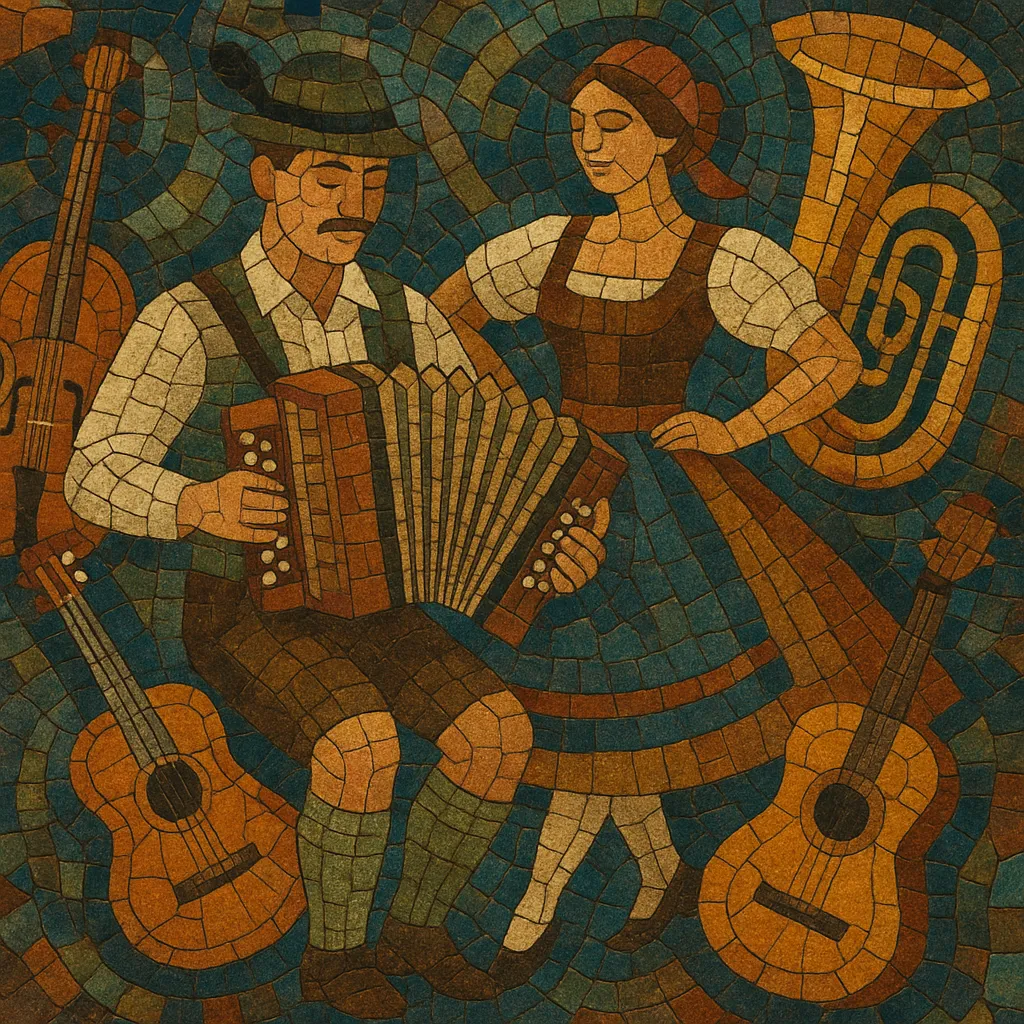German folk music (Deutsche Volksmusik) is the traditional music of German-speaking regions, encompassing rural dance tunes, narrative ballads, dialect songs, and communal singing traditions. It is typically performed with acoustic instruments such as diatonic button accordion (Steirische Harmonika), zither, hammered dulcimer (Hackbrett), fiddle, clarinet, guitar, double bass, and, in many regions, brass band instruments.
Stylistically, it includes dance forms such as Ländler (3/4), Waltz (3/4), Polka (2/4), Schottische (4/4), Rheinländer (2/4), and the Bavarian Zwiefacher (alternating 3/4 and 2/4). Vocal traditions range from narrative and humorous couplet songs to yodeling (Jodeln) in the Alpine areas and Low German (Plattdeutsch) song in the north.
Over time, German folk music evolved along two parallel lines: an "authentic" regional practice centered on social dance and local ensembles (Stubnmusi/Tanzlmusi) and a popularized, media-friendly form (volkstümliche Musik) that intersected with Schlager and television entertainment, while later revivals blended folk with rock, pop, and brass idioms (Neue Volksmusik).
The modern idea of "Volksmusik" was catalyzed in the late 18th century by Enlightenment and early Romantic thinkers such as Johann Gottfried Herder, who valorized the "Volkslied" (folk song). In practice, German folk music grew from regional dance and song traditions across Bavaria, Swabia, Franconia, the Rhineland, Saxony, and the north German coast. Dance forms like Ländler, Waltz, Polka, Schottische, and Rheinländer became social staples, while Alpine regions cultivated yodeling and zither traditions. Brass bands (Blasmusik) and village string ensembles codified local repertoires during the 19th century.
The early 20th century saw song collectors and youth movements (e.g., Wandervogel) preserve and disseminate regional songs. After World War II, a media-friendly variant, volkstümliche Musik, emerged on radio and television, presenting polished versions of folk idioms alongside Schlager sensibilities and large brass ensembles (e.g., Egerländer style). This popularized image often differed from community-based practice but brought the sound to mass audiences.
Parallel to this, authentic regional traditions remained vibrant in dance houses and local festivals, while Low German shanties and maritime songs persisted in the north.
The 1970s saw a folk revival and a Liedermacher (singer-songwriter) wave that re-engaged with traditional repertoire and social commentary. Groups such as Zupfgeigenhansel and Liederjan revived historical songs, while Ougenweide fused medieval and folk elements with rock. Brass and village ensembles continued, and regional dialect groups (e.g., from Bavaria) developed politically conscious and satirical strands (e.g., Biermösl Blosn).
In the 2000s–2020s, Neue Volksmusik blended folk with rock, pop, indie, and brass-band energy (e.g., LaBrassBanda) and modern shanty-folk crossovers (e.g., Santiano). Alongside the TV-oriented volkstümliche strain and enduring local dance traditions (Tanzl-/Stubnmusi), festivals and workshops support transmission, while folk-rock, medieval-rock, and even folk-metal scenes draw on German folk timbres and melodies.


